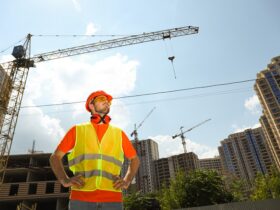When standing in a brilliantly created building, have you ever wondered what lies beneath? The unsung hero beneath every architectural feat is, surprisingly, the soil. The health of the soil directly impacts the strength and stability of a building. But how does the soil transcend its silent role into a deciding factor during construction design and decision-making?
Top tier architects, construction engineers and designers, coming together to create impeccable structures, rely heavily on a simple factor like soil quality. Yes! a handful of dirty earth can influence the intricacies of designing a building, from the building materials used, modifying designs, to even dictating the cost of the project.
This blog aims to unravel the surprising relationship between soil testing and construction design. We’ll delve into why soil testing is necessary, what it entails, when it should be done, who should carry it out, and its impact on construction design and decision-making.
The Unsung Hero Beneath The Concrete: Soil Testing
Do you remember creating sandcastles as a child? The damp, clingy sand made the sturdiest castles. Rot them on a dry sand mound and they crumble. That simple childhood activity held an important lesson about construction; the importance of a strong foundation. In the real-world construction scenario, a solid understanding of the soil’s composition and quality provides the building blocks for everything else.
Soil testing is essentially a measure of the properties of the soil, which include its type, composition, density, permeability, and moisture content, among other factors. It assesses the load-bearing capabilities of the soil and its ability to sustain a structure.
Precise soil testing creates comprehensive knowledge about the site’s soil that directly impacts construction designs including the selection of suitable construction materials, determining foundation depth and type, and planning drainage and landscaping.
Why Do We Need Soil Testing?
Soil testing equips designers and builders with essential information to ensure a building’s longevity and safety. Designing a construction project based on the soil type ensures the optimal load-bearing capacity, preventing structural damage like sinking or shifting foundations.
Soil testing evaluates the potential of soil-related issues such as soil shrinkage or swelling, which might need special construction techniques or materials. This preemptive approach can save significant time and resources during construction.
Environmental aspects are also taken into consideration in soil testing, assessing hazards like soil contamination, which may pose health risks and require treatment before construction can proceed.
The Flipside: The Cons Of Skipping Soil Testing
Skimping on soil testing can lead to serious consequences. A lack of knowledge about the soil’s load-bearing capacity may lead to structural instability, causing the foundation to settle or even collapse.
Sudden changes in soil-condensation during construction can lead to abrupt changes in the decision-making process, thereby inflating costs and causing delays. Ignoring potential environmental hazards can also potentially lead to legal issues down the line.
The Role Of Professionals
Entrusting soil testing to trained professionals is non-negotiable. Geotechnical engineers or soil scientists undertake this job, correctly interpreting the results and providing informed recommendations for construction design.
These professionals not only conduct physical testing of the soil but also survey historical data and geographical information to predict possible soil behavior. Their role is fundamental in translating soil health into insightful construction decisions.
The Impact On Construction Design And Decision Making
Soil testing directly influences construction design and decision-making processes. It influences the selection of materials( like concrete, timber or steel) and building techniques (like pile foundation or spread footing). It can also indicate the need for soil treatment or adjusting building designs.

Knowing what lies beneath supports informed decision-making, optimizes resources, and creates structures that last a lifetime.
Conclusion
The foundation of every beautiful architectural marvel, be it the Eiffel Tower or your cozy studio apartment, owes its stability to the unsung hero beneath – the soil. Soil testing may seem like a minute detail but enriches the construction design and decision-making processes.
Treat soil testing not as a task to be ticked off a checklist, but as a stepping stone to creating sustainable, secure, and lasting structures. Ensuring that the right professionals carry out comprehensive soil testing and interpret the results correctly will go a long way in constructing buildings that stand the test of time.
In an era where sustainability and long-term value stand paramount, overlooking soil testing in construction would be akin to building our sandcastles on loose, dry mounds; destined to crumble. Let’s commit to creating architectural marvels that are as robust beneath as they are stunning above.










Find Us on Socials